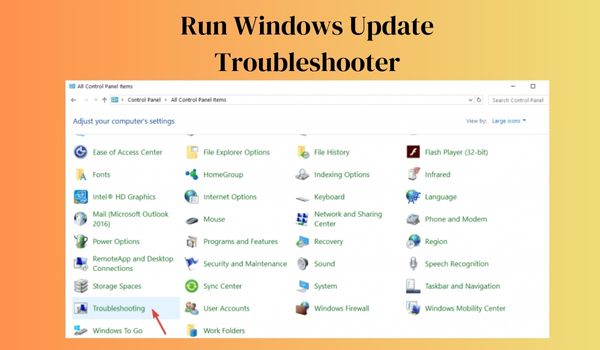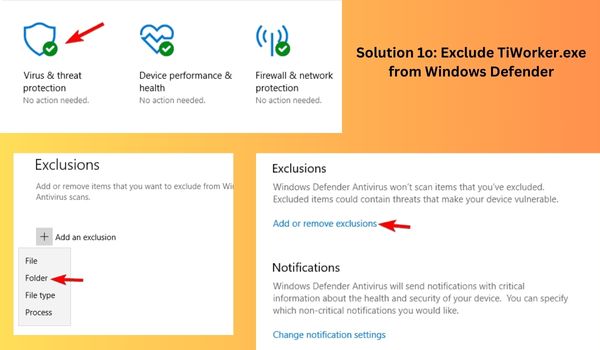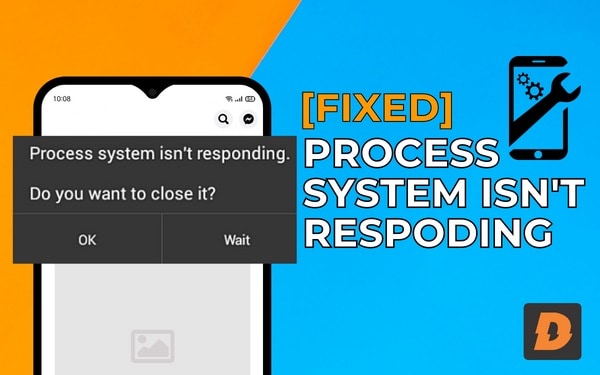10 Easy Fixes TiWorker.exe High CPU Usage? | How To Fix. High CPU performance issues related to Tiworker.exe have been reported by many Windows users, including the latest version of Windows 11. Tiworker.exe is constantly running in the background, checking for and downloading system updates.
This is the reason why it causes problems with high CPU load and in many cases causes Windows to stop working.
If you are also wondering how to avoid high disk load problems, in this guide we will show you some possible ways to solve the high CPU load problems of the TiWorker.exe process in Windows.
What is TiWorker.exe?
TiWorker.exe is a subprocess of TrustedInstaller.exe and is part of the Windows Module Installer Service. It is located on the computer in the “C:WindowsInstaller” directory. This module is responsible for Windows updates on the entire computer.
It therefore runs in the background of Windows and checks whether the latest Windows updates are available. In general, this module does not consume any system resources (RAM, CPU or hard disk) during operation.
As soon as the update process is completed, TiWorker.exe releases the computer’s resources again. However, in some cases it has been observed that the TiWorker.exe process consumes a large amount of CPU resources immediately after starting the computer and runs very slowly. Therefore, it is necessary to stop the execution of TiWorker.exe.
Note: Do not disable or uninstall this process as this may prevent your computer from receiving important Windows security updates.
Why is TiWorker.exe Causing a High CPU?
TiWorker.exe causes a problem where CPU usage is high for several reasons:
- Windows is out of date.
- WindowsWorker is outdated. Windows is old. Third-party applications installed at some point are consuming a lot of disk space and causing the problem.
- The stack update service compresses some Windows update files and causes a problem with the TiWorker.exe file.
- Sometimes the problem occurs when playing games or running demanding applications.
It has also been detected that some malware is present in the TiWorker.exe file. Therefore, it is recommended that you scan your computer with a good antivirus program for viruses or malware before proceeding to solve the problem.
How To Fix TiWorker.exe High CPU?
Solution 1: Run System Maintenance Troubleshooter Tool
System Maintenance Troubleshooter is a tool built into Microsoft Windows that automatically performs regular maintenance tasks on your computer to prevent system errors before they occur.
Proceed as follows to run the System Maintenance Troubleshooter:
- Simultaneously press the Win+S key combination and enter “Troubleshoot” in the search bar.
- Now click on the Show All button.
- Then select System Maintenance
- Click Next and follow the instructions.
Now check whether the problem has been solved or not. If not, continue with the next solution.
Solution 2: Update your Windows
Upgrading Windows may prevent TiWorker.exe from running under high CPU load. The module cannot continuously check for Windows updates and cannot run in the background.
Follow these steps to update Windows:
- Type “Control Panel” in the search box on the taskbar and press the button.
- Open Control Panel, click the Control Panel button, click Windows Updates in the left corner, and then click Check for Updates.
- Click the Windows Windows Update button and then click the Windows Windows Update button.
Now check whether TiWorker.exe is slowing down the system or not.
Solution 3: Restart Windows Update Service
Many users claimed that restarting the Windows Update Service would fix the Tiworker.exe problem. Therefore, we suggest that you follow the instructions on how to do this.
- Launch the Run dialog box by pressing the Windows key + R.
- Enter services.msc in the window and click OK.
- In the Services window, locate the Windows Update service and click on it.
- Click the Restart link on the left side of the panel.
Solution 4: Delete Windows Update Files
If the Windows Update file on your computer is corrupt, you might experience issues with high CPU utilization. In this case, deleting the Windows Update file can resolve the issue.
The Windows Update service stores all of its files in a special folder called SoftwareDistribution. Navigate to this folder and delete the files.
- Press the Win + R key combination, type ‘Run.msc‘ in the field, and press Enter.
- In the Services pane, click Windows Update.
- Click Stop.
- Open File Explorer and navigate to the folder
C: \Windows
- Navigate to C:³ Files.exe, right-click SoftwareDistribution, and select Uninstall.
- Now restart the Windows Update service and see if the high disk utilization issue with Tiworker.exe in Windows 10 is resolved.
Solution 5: Clear all Updated history
Many users have reported that TiWorker.exe may be slowed down by temporary files on their computer, so it is recommended to delete all temporary system files. To remove temporary files, simply go to C: Windows/Temp, find the Updates folder and delete it. Then restart your computer and check if TiWorker.exe is still slowing down your computer.
Solution 6: Run Windows Update Troubleshooter
We recommend running the Windows Update Troubleshooter, which analyzes and fixes potential problems with Windows Updates. Since the TiWorker.exe service is related to Windows Update, running the troubleshooter may fix the problem.
- Launch the Control Panel by pressing Windows+R, type control in the Start field, and press Enter.
- Now click Control Panel view, click Large icons and click Troubleshooting.
- Then click System and Security and then click Troubleshoot Windows Update.
- A new window will open. Click Next and follow the on-screen instructions to run the Windows Update troubleshooter.
Wait until the scan is complete and check if the issue with high CPU usage of tiworker.exe has been resolved or if the problem persists.
Solution 7: Run SFC & DISM scan
The TiWorker.exe file may be corrupted and not working properly. Therefore, it is recommended to run an SFC check. This is a built-in function that repairs corrupt Windows files by scanning them just once.
Follow the steps below to perform a system file check:
- Press the keyboard shortcut Win+X and click on the command prompt (Admin).
- Type sfc/scannow and press ENTER.
- Wait patiently for the procedure to complete.
The problem should be resolved, but if not, you need to run the DISM check. Follow these steps to run the DISM check:
- Press Win+X and click on the command prompt (Admin)
- Type DISM.exe/Online /Cleanup-Image /RestoreHealth and press Enter.
- Be patient while the DISM scan is running, it may take more than 15 minutes.
After both checks are completed, restart the system and check if TiWorker.exe’s high disk usage is resolved.
Solution 8: Rename the SoftwareDistribution directory
If the “SoftwareDistribution” folder is corrupted, TiWorker.exe can cause high CPU utilization and slow down your computer. In this case, you need to rename the folder.
Proceed as follows to rename the SoftwareDistribution folder:
- Press Win+R simultaneously to open the Run dialog box.
- Type services.msc and press OK.
- Search for Windows Update and double-click it.
- Change the startup type to manual and click Stop.
- Click Apply now.
- Navigate to C: Windows, find SoftwareDistribution and rename it to Previous.
- Now go back to Services and open Windows Update.
- Then change the startup type to Automatic and click Run.
- Click Apply.
Now restart your computer and see if the issue is resolved.
Solution 9: Perform a Clean Boot
You should perform a clean boot to see if any programs interact with TiWorker.exe and slow down your computer.
Boot the system as follows
- Open the Run dialog box by pressing Win+R at the same time.
- Type “msconfig” and press Enter.
- In the Services window, check the box “Hide all Microsoft services” and click Disable all.
- Now go to the Startup tab and click Open Task Manager.
- Disable all startup programs one by one.
- Now go to System Settings and click Apply.
Restart your computer and check if the problem is solved. If not, open all disabled programs one by one and restart the computer each time until you find the process causing the problem.
Once you find the problematic program, update or uninstall it.
Solution 1o: Exclude TiWorker.exe from Windows Defender
It has been found that Windows Defender continues to scan TiWorker.exe, resulting in increased CPU usage. In this case, excluding TiWorker.exe from Windows Defender can solve the problem of increased CPU usage of TiWorker.exe in Windows 10.
Follow the steps to exclude TiWorker.exe from Windows Defender:
- Open Task Manager by right-clicking on the taskbar and selecting Task Manager.
- Right-click TiWorker.exe and select Open file location.
- Right-click and select the TiWiWorker file.
- Press Win+S and search for Windows Defender.
- Click on Windows Defender Security Center.
- Navigate to the Virus and Threat Protection section.
- Click on Virus and Threat Protection Settings.
- Then, in the Blocks section, click Add or Remove a block.
- Then click Add an Exclusion and select a folder.
- Paste the copied path into the folder.
The defender will stop scanning the system. Restart the computer to confirm that the problem is resolved.


















